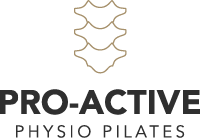Botox is licensed for treating chronic migraines and headaches per NICE (National Institute for Health and Care Excellence) guidelines. Our clinic adheres to the PREEMPT protocol recommended in the UK.
How Does Botox Relieve Headaches and Migraines?
Botox blocks acetylcholine, a neurotransmitter responsible for pain signals, and prevents the activation of headache pathways in the head and neck. It also relieves muscular tension in areas like the upper trapezius, a common trigger for headaches and neck pain.
Procedure Details
Injection Sites: A series of 31 small injections are administered to targeted muscles in the head, forehead, neck, and shoulders.
Repeat Treatments: Injections can be repeated every 12 weeks until symptoms improve, followed by maintenance treatments every 6–12 months.
Recovery and Post-Treatment Care:
Minimal downtime is required.
Possible mild bruising or swelling at injection sites.
Avoid the following for the first 24 hours:
-
- Rubbing or touching the treated area.
- Exercise.
- Applying makeup on the area.
- Activities that pose an infection risk (e.g., swimming pools, hot tubs).
When Will I See Results?
Improvement is typically noticed 2 weeks after the first treatment.
If partial improvement occurs, a second session may be required at 12 weeks.
Does the Treatment Alter Facial Appearance?
Botox in the PREEMPT protocol includes areas of the forehead. The treatment can result in reducing forehead lines caused by tension but does not dramatically alter your appearance.
How Long Does the Treatment Last?
A second session may be needed at 12 weeks to maximize results.
Long-term treatment is typically required every 6–12 months, depending on individual response.
Effectiveness
The PREEMPT protocol has an 80% success rate in reducing headache and migraine symptoms.
Additional muscle tension areas (e.g., trapezius) can also be treated if needed.
Cost
Migraine Botox treatments start from £450.
Additional areas may require higher doses, discussed during the consultation.

